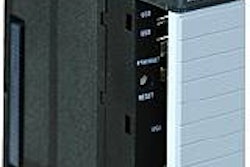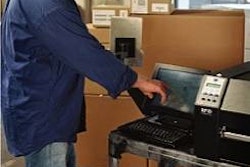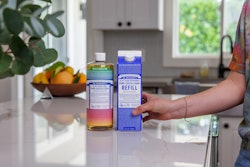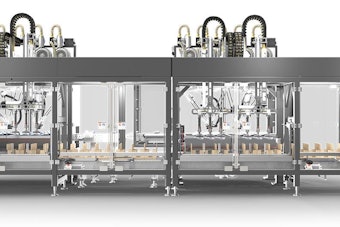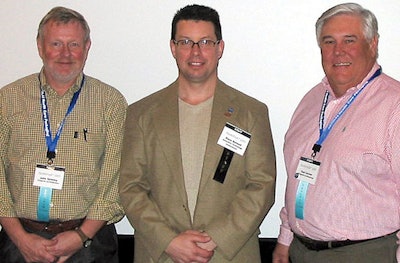
Ross installed radio-frequency identification (RFID) equipment in its packaging development lab and began to send RFID-tagged packages to Wal-Mart in January.
Initially, tagging was done manually. “We had coding challenges,” Wallace admitted. “We couldn’t get the reader and tag to talk to one another. We did 48 pallets, and then changed readers and tags. After that, the process went smoothly.”
Wallace explained that “Wal-Mart hopes RFID technology will help them identify out-of-stock items, a problem that occurs mostly on Saturdays, and stores don’t know they’re out of stock.” He added, “They expect RFID technology can reduce out-of-stock lost sales by one percent, or $2.5 billion per year.”
Reducing out-of-stock products is also a key goal for Abbott, according to Wallace. “We’ll be able to tell where any case is at any time and be proactive in helping Wal-Mart get those cases on the floor. The end game is that Wal-Mart sells its shelf space to the most profitable bidder. They pay you only for what they can scan at the checkout. That means all shipping, stocking inefficiencies, and product shrinkage we now ‘own’ as their supplier. RFID changes that.” Wallace offered the following tips during his report:
• You have to be in a plant to learn about RFID. There’s no such thing as a plug-and-play installation. Our plan is to do it in the lab, then prove it in a plant.
• RFID tags are becoming smaller and can be placed inside a cap, vial, behind a label, or inside a medical device package.
• We are trying to be technology agnostic, buying tags or readers from any supplier and having them readable by any company.
• Liquids absorb RFID energy, metals reflect it.
• We expect bar codes and RFID readers to coexist for about the next 10 years, with RFID taking over eventually and replacing bar codes.
• RFID allows you to identify an individual bottle, but a bar code cannot know if it read one bottle three times, or three different bottles.
• Hardware continues to evolve. Generation 2 tags will make a difference. More companies will be making them, and the costs may drop by half.
• Interference is an issue for an RF-generating plant. Printers, cell phones, local area networks, and engines all have potential impact.
• If you’re not already learning about RFID, you’re falling behind your competition.
• At some point, the whole supply chain, from raw materials through finished goods, will be RFID enabled.
HealthPack 2005, held March 23-24 in San Antonio, drew a record 158 attendees, a 22% improvement from last year’s event, according to conference host Innovative Technology Conferences. HealthPack 2006 is scheduled for March 2-3 in New Orleans, LA. —Jim Butschli
